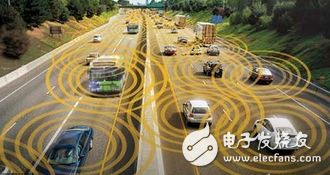Huawei/Qualcomm Debate: Grab the new V2X standard to lead the era of car networking
In September 2016, the 73rd meeting of 3GPP was held in New Orleans, USA. The V2V standard of LTE-V was officially frozen in Release 14. According to the recently released plan of 3GPP, the other V2X was completed in March 2017 (75th meeting). Core agreement. As the most promising vehicle networking carrier, LTE-V has obvious advantages in terms of delay, transmission rate, reliability and deployment cost. The DSRC standard has been ready for more than a decade. It is not difficult to believe that in the future, the Internet of Vehicles will have a situation in which DSRC and LTE-V will compete in the V2X standard.
Characteristics and current status of DSRC and LTE-VDSRC (Dedicated Short Range CommunicaTIons) is a dedicated short-range communication technology. DSRC is an efficient wireless communication technology that provides high-speed data transmission and guarantees low latency and low interference of communication links. Vehicle-mounted unit (OBU) vehicles and roadside units (RSUs) are installed to enable inter-vehicle communication (V2V) and vehicle-to-road infrastructure communication (V2I) through DSRC-specific short-range communication technology. DSRC is an important part of the ITS standard system framework and is the foundation of the entire intelligent transportation service system. DSRC can realize the recognition and two-way communication of moving targets under high-speed motion in a specific small area (usually tens of meters). DSRC can transmit image, voice and data information in real time, realize bidirectional communication of V2I, V2V and V2P. DSRC is widely used. It is applied in the fields of ETC non-stop charging, access control, fleet management, information service, etc., and has unique advantages in vehicle identification, driver identification, information interaction between road network and vehicle, and vehicle self-organizing network.

The DSRC has been recognized by the US Department of Transportation as a V2V standard and has been finalized after 10 years of development and testing. In September 2015, the US Department of Transportation allocated $42 million to conduct safety tests in three locations in the United States. It is expected that 10,000 vehicles will be installed in 2017. These three locations include New York, Wyoming, Tampa Bay. GM's Cadillac CTS, which will be launched in 2016, will be equipped with V2X. The EU's collaborative intelligent transportation system and Japan's V2X (C-ITS) are also based on DSRC technology.
LTE-V technology is considered to be an important cornerstone for the realization of the Internet of Vehicles, and is valued by people in the field of intelligent transportation ITS. LTE-V is based on 4.5G network, LTE cellular network as the basis of V2X, and the key research direction for the future 5G. It is a proprietary protocol for the Internet of Vehicles. It is aimed at vehicle networking applications and realizes car and vehicle (V2V), vehicle and Roadside facilities (V2I), vehicle and people (V2P), vehicle and network (V2N) interconnection and data transmission, collectively referred to as V2X, where the core is the V2V interconnection.
In order to cope with the needs of vehicle active safety, driving efficiency, and in-vehicle entertainment multi-scene services, LTE-V adopts "LTE-V-Cell + short-range straight-through communication (LTE-V-Direct)", the former based on existing The expansion of cellular technology mainly carries the traditional car networking business; the latter introduces LTE D2D (Device-to-Device), LTE-D has the ability to find thousands of devices and services within 500 meters, so it can make two More than one of the closest LTE-D devices communicate within the network, which can provide a good foundation for LTE V2X, realize V2V, V2I direct communication, and carry vehicle active security services, mainly meeting the requirements of terminal security, low latency and high reliability.
DSRC and LTE-V standardsSince the 5.9 GHz DSRC has potential interference problems in China, China needs a different V2X solution. CCSA has already launched a Work Item for LTE V2X in China, and Huawei has begun to deploy. The biggest benefit of LTE V2X is the ability to reuse existing cellular infrastructure and spectrum. Operators do not need to deploy dedicated roadside units (RSUs) and provide dedicated spectrum.
At present, Huawei and Qualcomm's two major cellular technology providers are actively promoting a vehicle-to-vehicle (V2V) and vehicle-to-infrastructure called "V2X" by proposing a new LTE standard, LTE V2X. (V2I) business opportunity; this move is finally realized with the current automotive technology supplier development and testing for more than ten years, and is also dedicated to the V2X application dedicated short-range communication (Dedicated Short-Range CommunicaTIons, DSRC) frontal battle .
Since DSRC is basically Wi-Fi technology, in theory, LTE can provide better quality of service than DSRC, and DSRC faces some problems in deployment, its performance cannot be guaranteed, but the current DSRC standard is ready, and LTE V2X is still in the research stage, so there are still some uncertainties in LTE-V in the future.
In the future, who will dominate the V2X standard, will Huawei and Qualcomm lead the era of Internet of Vehicles? We will wait and see!
LEDStrip Lights Commercial,LEDStrip Lights,USB Power Outlet,Custom LED Light Strips
Dongguan baiyou electronic co.,ltd , https://www.dgbaiyou.com